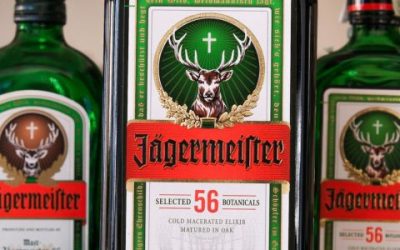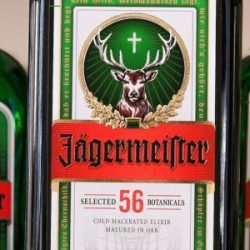Marks and Spencer Plc (M&S) brought an infringement action against Aldi Stores Limited (Aldi) based on its UK-registered designs for gin bottles containing gold flakes and an integrated light.


M&S launched its product in Autumn 2020, with Aldi launching its own gin bottles containing gold flakes and an integrated light in November 2021.

Decision of 31 January 2023
Judge Hacon upheld the infringement claim and issued an order granting M&S relief for the infringement. However, before we consider Aldi’s appeal, it is worth reviewing the background of the case.
Relevant sector
M&S proposed a highly specific relevant sector – Christmas liqueur in the UK. Aldi proposed a more general relevant sector – spirits and liqueurs in the UK. Judge Hacon agreed with Aldi.
Informed user, awareness of prior art, and level of attention paid
The informed user is a member of the UK public who purchases and consumes spirits and liqueurs. The level of attention is likely to be relatively high, and there is an opportunity for direct comparison.
Designer’s degree of freedom
M&S confirmed that an initial version, without lights, was first put on the market on 17 September 2019.
There was a vast range of bottle shapes considered, with two constraints:
- The neck of the bottle had to be sufficiently wide to inject gin liqueur and gold leaf
- The bottle had to have straight sides in part as it provides a better surface for designs
In the end, the botanics-shaped bottle was selected.
Aldi agreed with design constraints but added:
- It was only possible to create a snow effect using gold flakes (the previous design used titanium oxide flakes which were white)
- It was costly to use more than two colors on a bottle design
Judge Hacon held that the designers had considerable freedom.
He accepted that gold flakes were required for the snow effect and so there were constraints on the neck. However, there were many shapes of bottle to consider. Also, while it made sense to have a winter design, there were no limitations on what that should look like. Finally, while a light would likely need to be in the base of the bottle, it required the choice of a light in the first place.
Features solely dictated by technical function
Aldi argued the following features were solely dictated by technical function:
- distribution of gold flakes, i.e., scattered throughout the liquid when the bottle is shaken and otherwise settled at the bottom;
- use of gold flakes;
- leaving the upper, curved portion of the bottle clear of markings; and
- putting the integrated light source in the punt (the dimple) at the base of the bottle
Judge Hacon disagreed.
Design corpus
The 12-month grace period means that only designs prior to 15 December 2019 were to be considered.
Whilst there were a number of earlier botanics-shaped bottles, bottles with lights, and/or bottles containing gold leaf flakes, none of which featured all three elements.
Comparison of the overall impressions
It was held that the bottles were identical in shape, the stoppers appeared identical, the wintery scenes consisted mostly of tree silhouettes, the snow effect found in UK 80 and 84, and the integrated light in UK 82 and 84.
Judge Hacon held that “each of those similarities would appear significant to the informed user and cumulatively they would be striking.”
Although there were differences, such as the INFUSIONIST branding (M&S had no branding on the designs), the Aldi stopper being darker, and the Aldi winter scene being brighter and busier than that on the M&S designs, these were considered “… relatively minor detail which do not affect the lack of difference in the overall impressions produced …”
Appeal
To succeed in the appeal, there has to be an error in law or principle. The Court of Appeal held that Judge Hacon took the correct approach in assessing the products/design, the design corpus, and the grace period. He made no error of principle in comparing the overall impression and his conclusion was one he was entitled to take.
The appeal failed.
Comments
This case demonstrates the benefit of registered design protection. This is particularly where the likelihood of confusion would be difficult to demonstrate with a trademark. In this case, Aldi’s product was labeled INFUSIONIST and therefore brand confusion would be unlikely. In most cases, an infringer chooses its distinct branding to reduce the risk of a successful claim. It is also a reminder that minor changes to a registered design do not protect from infringement actions.

Written by Charlotte Wilding
Partner, Keltie LLP
The Trademark Lawyer Editorial Board Member
You may also like…
EUIPO and UANIPIO welcome the integration of Ukraine’s trademarks into TMview
The European Union Intellectual Property Office (EUIPO) and the Ukrainian National Office for Intellectual Property...
Jägermeister succeeds in opposing the EU trademark application Alten Kräuterfrau for alcoholic beverages
Mast-Jägermeister SE filed an opposition on the grounds of Article 8(1)(b) – likelihood of confusion between the signs...
INTA’s Brand & New podcast wins prestigious w3 Award for “Inside the Dupe Revolution” series
New York, New York—October 14, 2025—The International Trademark Association (INTA) is proud to announce that its...
Contact us to write for out Newsletter














